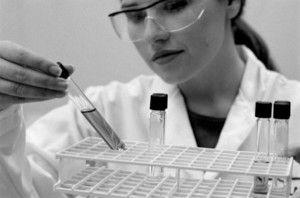In an article by Xencor President and CEO Bassil Dahiyat, published in Pharmaceutical Executive on 4 November 2009, the development of ‘biobetter’ follow-on biologics (FOBs) — optimised versions of pioneer drugs that have improved pharmaceutical properties but carry only minor changes in structure — is discussed.
As he points out, Pfizer Policy Director, Kent Jancarik, noted that his company sees the major emerging markets as the principal battleground in capitalising on the promise of FOBs. "Ranbaxy and others will rely on local approvals to effectively subsidise their registration applications in the more regulated US and European markets", Mr Jancarik said. "It may take them longer to compete due to the bridging studies that still pose a hurdle to entry, but a lower-cost base and efficiencies on the development and manufacturing side will help counter that. On the other side of the equation, it will be difficult to compete in high-potential developing markets because of the local generics players established presence and the supportive industrial policies these companies can count on".
According to Mr Dahiyat, given the diversity of players in this space, the capacity to adopt technologies to one-up the competition is going to be the long-term key to success. “For example, if a company can re-engineer an antibody for an extended half-life, then it can persuasively leverage the result to payers and providers, resulting in a superior, more competitive product due to its less-frequent dosing regimen”, he explains.
Mr Dahiyat writes the success of Humira (dosed twice monthly) in picking up market share from Enbrel (dosed weekly) in rheumatoid arthritis, and the growth of Neulasta (dosed once per 14-day cycle) over flat sales of Neupogen (daily dose) demonstrate the merits of this approach. According to him, the value proposition is weighted in improved clinical outcomes.
Mr Dahiyat states that if you are going to make the investment of US$100 million to US$200 million to develop an FOB, it makes sense to make the incremental investment to incorporate technologies for a biobetter FOB that is more likely to capture market share and generate a return on investment. “In unlocking the promise of the new FOB environment, innovation is still required”, he writes. (see also Innovation over imitation: New FOBs technologies, Innovation over imitation - Charting the FOBs landscape, Innovation over imitation: Tools to compete and win with ‘biobetter’ FOBs, Innovation over imitation: High-cost biosimilar FOB development, slow uptake and Innovation over imitation: ‘Biobetter’ follow-on biologics)
Reference:
Bassil Dahiyat. Innovation Over Imitation. Pharmaceutical Executive. 2009 November 4.
Source: Pharmaceutical Executive








 0
0











Post your comment